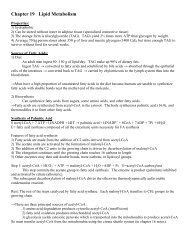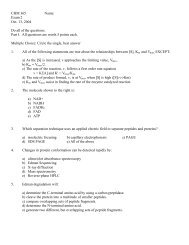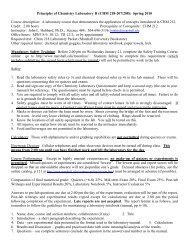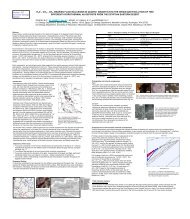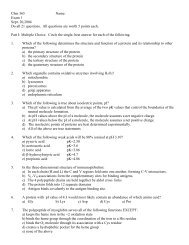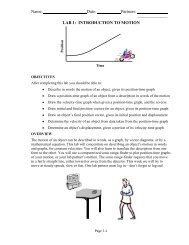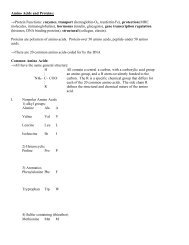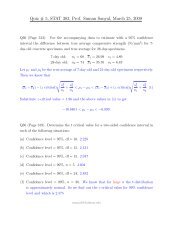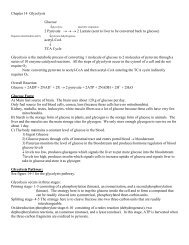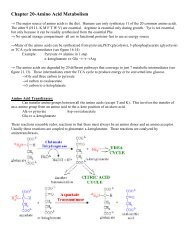Chapter 15 – Chemical Equilibrium
Chapter 15 – Chemical Equilibrium
Chapter 15 – Chemical Equilibrium
You also want an ePaper? Increase the reach of your titles
YUMPU automatically turns print PDFs into web optimized ePapers that Google loves.
12<br />
x = 0.0780 atm<br />
P H2e = P I2e = 0.100 atm <strong>–</strong> 0.0780 atm = 0.0220 atm<br />
P HIe = 2(0.0780 atm) = 0.<strong>15</strong>6 atm<br />
As a check it is a good habit to plug your answers back into the equilibrium equation<br />
to verify you get back K eq .<br />
2<br />
(0.<strong>15</strong>6)<br />
(0.0220)(0.0220)<br />
= 50.3 ≈ K eq<br />
A more challenging set of initial conditions for the same reaction follows.<br />
P H2i = 6.23 x 10 - 2 atm P I2i = 4.14 x 10 - 3 atm P HIi = 2.24 x 10 - 3 atm<br />
Now calculate the reaction quotient and direction of equilibrium shift.<br />
Q =<br />
(6.23 x 10<br />
(2.24 x 10<br />
-2<br />
-3<br />
)<br />
2<br />
)(4.14 x 10<br />
-3<br />
)<br />
= 19.4 < K eq reaction shifts right<br />
P H2e = (6.23 x 10 - 2 - x) atm P I2e = (4.14 x 10 - 3 - x) atm P HIe = (2.24 x 10 - 3 + 2x) atm<br />
Note: If Q had been greater than K eq , then x would have been added to H 2 & I 2 and subtracted<br />
from HI.<br />
Substitute into the equilibrium expression.<br />
50.5 =<br />
(6.23 x 10<br />
(2.24 x 10<br />
-2<br />
Expand and collect terms<br />
-3 +<br />
2x)<br />
2<br />
- x)(4.14 x 10<br />
-3<br />
- x)<br />
x 2 <strong>–</strong> (1.32 x 10 - 2)x + (1.72 x 10 - 5) = 0<br />
This requires the quadratic equation<br />
x =<br />
− b ±<br />
b<br />
2a<br />
2 −<br />
4ac<br />
Plugging in and solving yields



